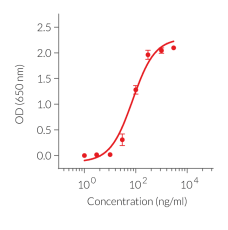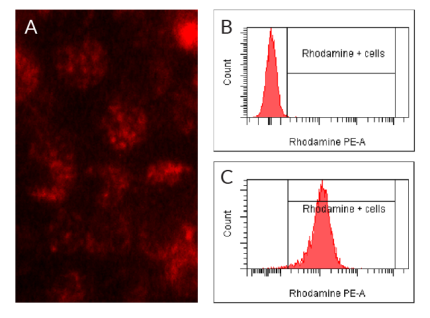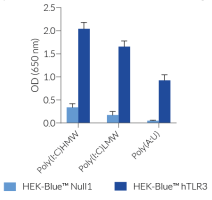Poly(I:C) (HMW) Rhodamine
-
Cat.code:
tlrl-picr
- Documents
ABOUT
Rhodamine-labeled poly(I:C) (HMW)
Poly(I:C) Rhodamine was chemically labeled by covalent coupling of a rhodamine probe containing a reactive alkylating group. This confers fluorescent properties to poly(I:C) (HMW) whilst retaining TLR3 recognition properties.
Polyinosinic-polycytidylic acid (poly(I:C)) is a synthetic analog of double stranded RNA (dsRNA), a molecular pattern associated with viral infection.
Both natural and synthetic dsRNAs are known to induce type I interferons (IFN) and other cytokines production.
Poly(I:C) is recognized by Toll-like receptor 3 (TLR3).
All products are for research use only, and not for human or veterinary use.
SPECIFICATIONS
Specifications
TLR3
10 ng/ml - 10 μg/ml
100 µg/ml in water
The absence of bacterial contamination (e.g. lipoproteins and endotoxins) is confirmed using HEK-Blue-Lucia™ TLR2 and HEK-Blue-Lucia™ TLR4 cells.
Fluorescent TLR3 labeling
Flow cytometry
Fluorescent microscopy
Confocal microscopy
TLR3 activation
Each lot is functionally tested and validated.
Spectral Properties of Rhodamine
- Excitation λ max: 546 nm
- Emission λ max: 576 nm
CONTENTS
Contents
-
Product:Poly(I:C) (HMW) Rhodamine
-
Cat code:tlrl-picr
-
Quantity:10 µg
1.5 ml sterile endotoxin-free water
Shipping & Storage
- Shipping method: Room temperature
- -20°C
- Avoid repeated freeze-thaw cycles
- Protect from light
Storage:
Caution:
DOCUMENTS
Documents
Technical Data Sheet
Safety Data Sheet
Certificate of analysis
Need a CoA ?





